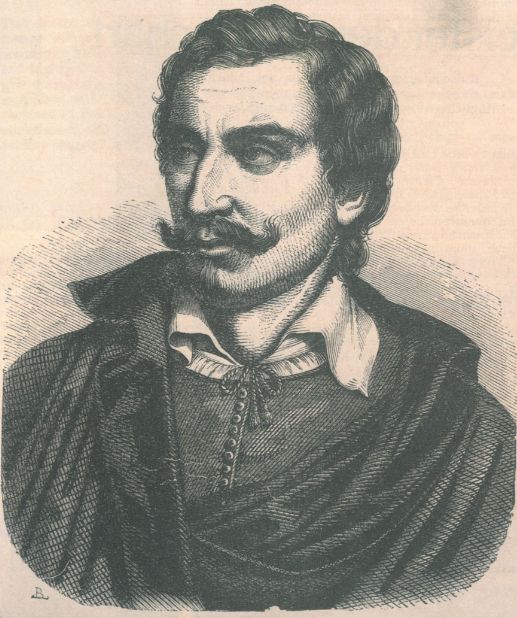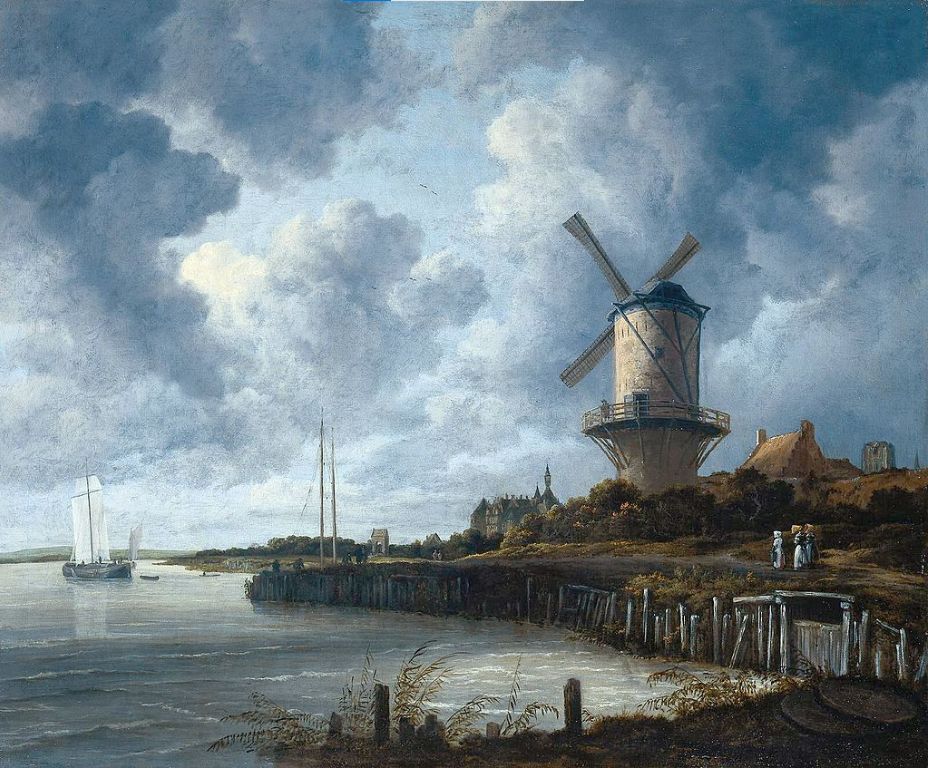In the landscape paintings of the 17th century Netherlands, Jacob van Ruisdael (1628/1629-1682) stands out as one of the most representative artists. He was not only a technically skilled painter but also an artist who expressed profound thoughts and emotions through his landscapes. His works capture the beauty of the Dutch natural scenery while also imbuing these scenes with rich symbolic meanings. By analyzing "The Windmill at Wijk bij Duurstede," we can gain a deeper understanding of his unique artistic style and intellectual depth.

Ruisdael's "The Windmill at Wijk bij Duurstede" is one of his most famous works. This painting depicts a windmill on the banks of the river Lek, a branch of the Rhine, at Wijk bij Duurstede. In the painting, the windmill is greatly exaggerated in size, towering over the surrounding town, creating a dramatic contrast. This exaggeration not only makes the windmill the visual center of the painting but also gives it an epic grandeur, reminiscent of Roman architecture in classical landscape paintings.

In this painting, Ruisdael employed a relatively unrestricted use of color, with the large windmill and the diminished town forming a strong visual contrast. He even removed the town walls and a gate known as the "Vrouwen Poort" (Women's Gate), replacing them with the figures of three women. However, the artist meticulously depicted a church clock tower, established in 1668, in the distant right side of the painting and emphasized the importance of the riverbank's palisades. These palisades needed constant renewal to strengthen the riverbanks and protect nearby areas from flooding.
Ruisdael's windmills are not just a part of the unique Dutch countryside but are also imbued with multiple symbolic meanings by Dutch writers. The sails of the windmills are associated with the cross of Christ, and the grains they grind symbolize the Eucharist. Windmills were also depicted as symbols of wealth, folly, and virtue. In "The Windmill at Wijk bij Duurstede," Ruisdael might have intended to suggest through the windmill and the riverbank palisades how humans control the forces of nature. This control not only reflects humanity's ability to transform nature but also represents a reverence for and dependence on natural forces.
Jacob van Ruisdael's works were deeply influenced by his era and environment. The 17th century was a period of flourishing landscape painting in the Netherlands, closely tied to the unique geographical and socio-economic context of the country. The low-lying terrain of the Netherlands, crisscrossed by rivers, necessitated the use of windmills for drainage and milling, making windmills a common theme in Dutch landscape paintings. However, Ruisdael's windmill paintings are not merely realistic depictions but rather thoughtful artistic expressions of the windmill as a subject.
Ruisdael's painting technique was superb. He skillfully used light and color to create a sense of deep space and realistic natural effects. His works often feature changes in cloud formations and light, enhancing the liveliness and visual impact of the scene. Additionally, Ruisdael exhibited exceptional skill in depicting details, whether it was the texture of trees or the reflections on the water, rendering them with meticulous precision.
"The Windmill at Wijk bij Duurstede" not only showcases Ruisdael's exceptional painting skills but also reflects his profound understanding of the relationship between nature and humanity. Through this painting, Ruisdael conveys the smallness and greatness of humans in the face of nature. Between the grand windmill and the tiny figures, viewers can feel the magnificence and power of nature, as well as the human endeavor to live in harmony with it through wisdom and labor.
Ruisdael's works had widespread influence in Dutch society at the time. He not only contributed significantly to the development of landscape painting but also conveyed respect and love for nature through his works. His paintings provide visual beauty while also evoking emotional and intellectual responses from viewers.
Through "The Windmill at Wijk bij Duurstede," we see how Ruisdael integrated his personal artistic vision into his landscape paintings. He not only depicted the beauty of nature but also used these scenes to express deep thoughts on human life and the natural environment. In his works, nature is not just a background or a subject but a vibrant, symbolic presence. Ruisdael, with his brush, conveys these profound thoughts and emotions to every viewer, allowing them to appreciate the greatness of nature and human ingenuity.